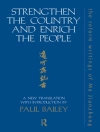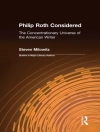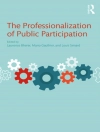In ‘Partial Portraits, ‘ Henry James presents a collection of brilliantly nuanced essays that delve into the art of character analysis, literary criticism, and personal reflection. Written with his characteristic prose style—rich and layered with intricate sentences—James navigates the territories of his subjects with a painterly eye. Each essay serves as a partial yet telling portrait of influential figures in literature and culture, capturing not just their public personas but also the complexities of their inner lives, thus offering insight into the larger literary milieu of the late 19th century. These pieces reflect James’s fascination with the interplay between reality and perception, bridging the gap between biography and critique, and revealing his views on the struggles of the artistic mind. Henry James, an eminent figure in the world of literature, often grappled with themes of identity and the multifaceted nature of existence. His transatlantic background—having lived in both America and Europe—imbued him with a unique perspective on cultural contrasts and literary styles. This context undoubtedly influenced his decision to craft ‘Partial Portraits, ‘ a work that seeks not only to celebrate his contemporaries but also to interrogate the nature of artistic creation itself. Readers who appreciate literary essays that illuminate both the subject and the author’s perceptive lens will find ‘Partial Portraits’ an invaluable addition to their library. This work transcends mere biography, inviting readers into a contemplative dialogue with the intricacies of human experience, making it a compelling read for anyone interested in the intersections of art, life, and the vibrant era that shaped modern literature.
About the author
Henry James (1843-1916) was an American-born British author, regarded as a key transitional figure between literary realism and literary modernism, and is considered by many to be among the greatest novelists in the English language. Born in New York City to a wealthy family, James was educated by private tutors in Europe and the United States. He published his first short story at age 21 and devoted himself to literature. A prolific writer, James authored twenty novels, more than a hundred short stories, autobiographical works, several plays, and a large number of non-fiction articles and books on various topics. His method of writing from the point of view of a character within a tale allows him to explore issues related to consciousness and perception, and his style is characterized by a rich, intricate prose, which has made his books a subject of study and analysis among critics and scholars. A notable work, ‘Partial Portraits’ (1888), is a collection of essays on the art of fiction and biographical sketches of 19th-century writers. James’s works have been cited as precursors to the stream of consciousness technique, later employed by such authors as Joyce and Woolf. Eminent for his exploration of the consciousness of his characters, Henry James’s legacy endures, and his novels, including ‘The Portrait of a Lady, ‘ ‘The Ambassadors, ‘ and ‘The Wings of the Dove, ‘ are considered classics.












